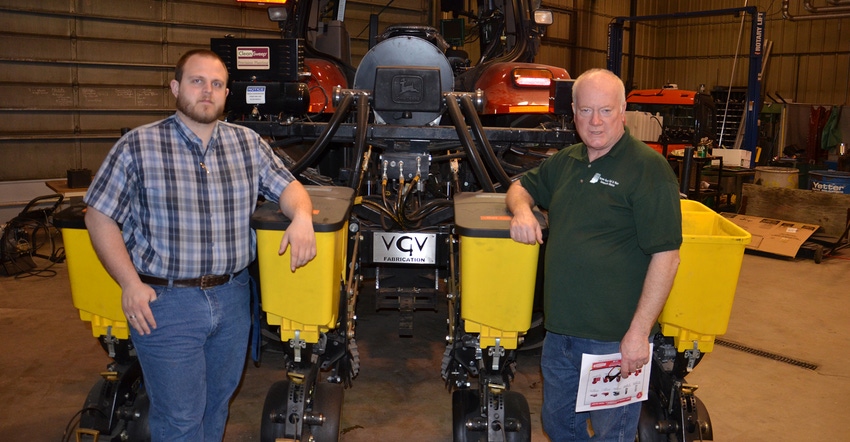
South Newton and North Newton high schools received a sizable grant and a large amount of money from Newton County government to purchase equipment and develop curriculum to teach students about various precision technologies used in agriculture. When agBOT announced a robotic seeding challenge event a couple of years ago, it was only natural that at least one of the schools would want to be involved.
“We had a class of 14 students using that new curriculum at the time, and three boys really got excited about the challenge,” says Darrell Allen, longtime vocational-agriculture instructor at South Newton. “We encouraged them, and they did most of the work.”
Drake Babcock, also a teacher at South Newton at the time, worked closely with the trio, with other students in the class helping out on certain aspects of the project as well. Babcock has since left teaching to work in ag industry. Matthew Armbruster took his position, and now works with students in the precision curriculum.
The three seniors who headed up the challenge of building an autonomous planter from scratch were Alex Vitous, Lucas Clifford and Kurt Vissering. All three graduated in 2016.
From scratch!
“Those three were down here every chance they had working on the planter,” Allen recalls. “They had to figure out how to plant two hybrids or varieties at once, how to vary the seed rate and much more.”
Multi-hybrid commercial planters typically use two side-by-side planter boxes. They feed into a single metering unit. The South Newton crew designed their planter with just one box per row. However, there was a divider inside each regular-appearing planter box so they could carry two hybrids at once.
The computer in the cab signaled the planter when to switch from one hybrid to the other. It also provided signals for changing planting rate.
“They had to figure all of those things out and program the computer to make changes,” Allen says. “They basically started from scratch with four planter units. It’s only a four-row planter, but it has all the bells and whistles that advanced, much larger planters have.”
They included the Precision Planting AirForce unit for down pressure on planter row units, and also used the Precision Planting 20/20 SeedSense system to monitor performance, including seed singulation.
Sometimes they had to solve problems on their own. The boys actually designed one piece for the row units, because they couldn’t find what they wanted. At one point it looked like it might be worth a patent, but in the end the school didn’t pursue it.
The planter was supposed to be capable of operating by itself, with no one in the tractor cab. While they met that requirement, Allen says, on the day of competition at agBOT, someone rode in the cab. Everything wasn’t quite in sync in that location to make them comfortable turning it loose without a driver.
“Those boys learned a tremendous amount and are ready for college and the future,” Allen concludes. “That’s our goal for the program.”
About the Author(s)
You May Also Like




